🇵 🇭| A Freshmen Psychology Students of National Teachers College | GROUP 2 | Art Appreciation | 🌿🌌🌊 | 1.1 BSP
Don't wanna be here? Send us removal request.
Text

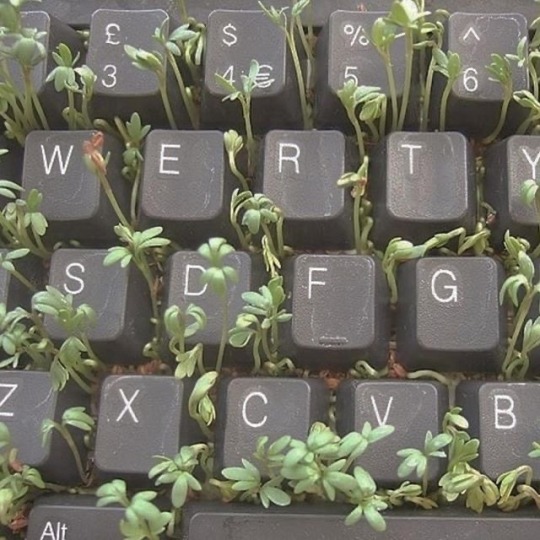
Click the hashtags name of our curators to directly see their works. 👇
#Eunice Astrid Villagracia#Rinalyn Villamor#John Jemson Velasco#Gianne Karlo Red Bugto#Joanna Chris Abellon#Angeline Evangelista
3 notes
·
View notes
Text
Curator 1
Villagracia, Eunice Astrid P.

She loves the idea of every one falling in love to the timeless beauty of art. Where they will find themselves being one with the master pieces and walking aimlessly but gracefully to the artists' flowery yet chaotic mind.
2 notes
·
View notes
Text
Curator 2
Villamor, Rinalyn L.

She moves with grace and in deck she's the ace. She's already one with the art when she draw and paint them to life. She started being lost with them, happy and embracing the possibilities of every one falling with it.
2 notes
·
View notes
Text
Curator 3
Velasco, John Jemson D.

He loves drinking coffee and taking a walk at night. He easily gets attached for love is like an art. The more you look and think about it, the more you fall unknowingly. So if you like someone to get a coffee with and walk under the starry night sky, someone like him is the perfect company.
2 notes
·
View notes
Text
Curator 4
Bugto, Gianne Karlo Red
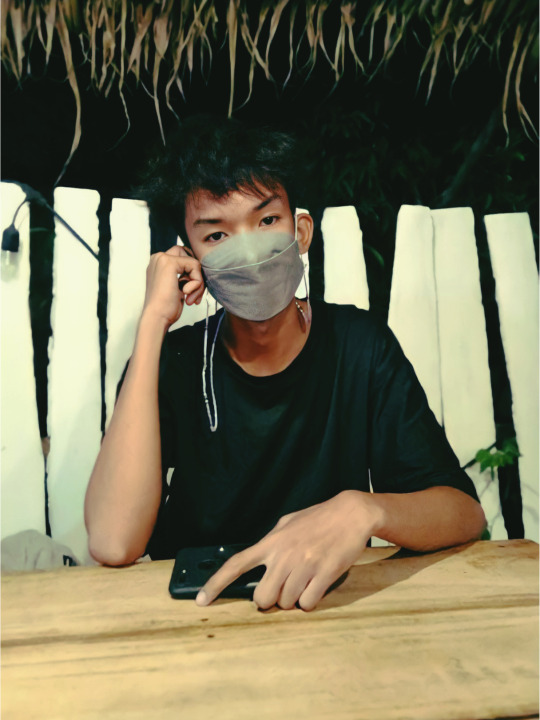
He is passionate and hopelessly in love to his other half. Even if you put him in every other master pieces, his eyes will only look fascinatingly to person his eyes, since the very first day, laid in to. To fall in love with someone he calls a master piece, to her, he is a man, he is her man.
2 notes
·
View notes
Text
Curator 5
Abellon, Joanna Chris
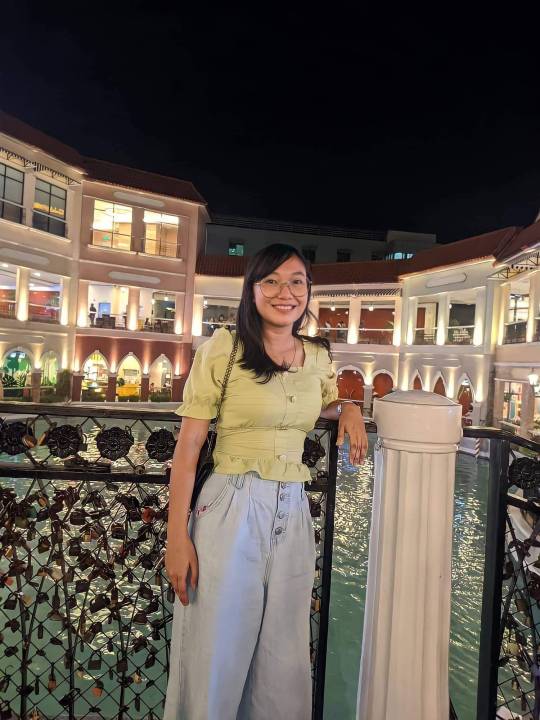
She loves nature and she loves bands and she craves good governance. She likes green, she loves to smile, and she loves art all through her life. And as she explore the vast universe; she met hurt, she met sad, and most importanly, she met happy in the eyes of art.
2 notes
·
View notes
Text
Curator 5
Evangelista, Angeline

She is a fighter, a doer, and a dreamer. She is an art that can be called a life changer. She loves too much and pour too much. She is a glass full, not half empty. So when she is a true, she's misunderstood, and often times she was passed by those who hardly understood art.
2 notes
·
View notes
Text
The Project Plan

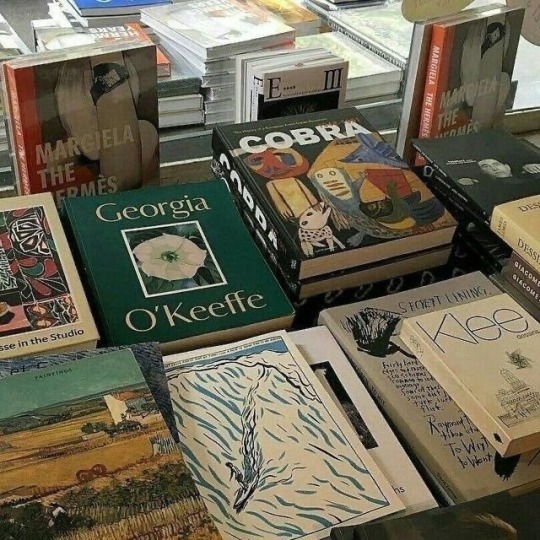
This is the Project Plan of Group 2 for Web Art.

2 notes
·
View notes
Text
Week 1
Reflection Paper (Visual Art)
You will see six (6) different visual arts from different curators with their reflections and appreciations in it.


2 notes
·
View notes
Text
Reflection Paper
Villagracia, Eunice Astrid P.

The Making of Philippine Flag
By: Fernando Amorsolo
The creation of the Philippine flag is a work of art painted by Fernando Amorsolo in the Philippines. Fernando Amorsolo was a pivotal figure in the history of painting in the Philippines. Without a reason to suspect, he designed a magnificent work of art. The painting illustrates three women, including Marcella Marino de Agoncillo (on the right side), referred to as the mother of the Philippine flag, with the assistance of Lorenza and Delfina Herbosa de Natividad, who is actually Marcela's daughter. Gen. Emilio Aguinaldo tasked them with sewing the first flag for the new republic. The clothes worn by the women are older, more classic in design aesthetic, and truly illustrate traditional forms. The women's hemlines are long, and their blouses resemble a classic "kimono." The three women are sewing fervently, demonstrating elegance. The artwork was not as vivid in the eyes, but it can established your tone in a calm manner. The scene is set inside a house that resembles a "Bahay Kubo." The primary colors used in the portrait are brown, red, blue, and yellow. This painting's mood and visual effect can be described as cool and collected and relaxing atmosphere.
The painting contains color distinctions ranging from brown to yellow, and it is not cohesive. The artist aligned his characters and the background in his artwork, resulting in a harmonious portrait. Because the painting is done in a post - impressionist style, there are no actual lines in it. The author's color schemes, which include brown and yellow, create a warm atmosphere for the audience. The yellow background indicates that it is a warm sunny day. The tones of the characters were also contrasts sharply with the backdrops, which helped to make the artwork appear serene. The artist uses rough texture in some areas of the canvas, specifically the skirts and backgrounds. The artist also uses different shades for the garments to distinguish them from the background. As a result, the painting depicted a realistic scene.
It is assumed that Fernando Amorsolo created this painting to demonstrate Filipino citizens how the Philippine flag was managed to make and to reassure them of the customs and traditions that have started to fade over time. To protect and value the national flag, as the white triangle represents fairness and fraternity, the blue field represents order and stability, truth, and justice, and the red field represents patriotism and fortitude. The sun's eight rays represent the first eight provinces placed under martial law by the conquerors. The three stars represent Luzon, Visayas, and Mindanao, respectively. This simply demonstrates that we should love our country, be proud of it, and not be shameful because our forefathers risked their lives to liberate us from the palms of colonizers. It is clear from Amorsolo's works of art that he is a nationalist; some of his works depict and pay tribute various Filipino traditions, belief systems, and social norms.
Amorsolo's artwork, The Making of the Philippine Flag, is impactful seeing as, despite the fact that he did not use various colour values, the shape, light, and expressions all work perfect harmony to become lively to the public's eye and to depict the mood of this subject. It also allows the artist and the viewing public to remain calm. This is due to Amorsolo's use of warm tones and the shapes he draws. The painting illustrates the peace and tranquility of the location, and the individuals are compassionate, as if they have no worries. The community understands the painting and understands what Amorsolo was attempting to depict.
The Making of the Philippine Flag made me feel really proud. Although we are under pandemic and a lot of things happened, we still are hoping for a better days like how they did in the past. They persevered and continue to believed by crafting the Philippine Flag making it their sole motivation to free us from the horror and terror of old days. Just like now, the reason why I used this artwork is to give hope to everyone. And since election is coming, we should do our best to make our forefathers proud. We need to choose for our country not for the leaders who are not worthy. We should be like them who choose Philippines ober anything else. If they can do it, we can do it too.
References
(12, June 2020). Embroidery depicts Fernando Amorsolo’s the making of the Philippine flag. gmanetwork. https://www.gmanetwork.com/news/lifestyle/artandculture/742436/embroidery-depicts-fernando-amorsolo-s-the-making-of-the-philippine-flag/story/
The Philippine flag. Philembassy. Org. https://www.philembassy.org.au/the-philippines/flag
7 notes
·
View notes
Text
Reflection Paper
Villamor, Rinalyn L.

Bayanihan
“Art should comfort the disturbed and disturb the comfortable.” – Cesar A. Cruz.
Paintings will always fascinate me. Whenever I see one in person, I tend to get close to it to see the pattern of brush strokes on the canvas and then I would just stare at it for a moment, taking my time to see every pattern that has been put on it and thinking what inspires the artist to make such a great masterpiece. Whenever I see one on social media, I would click the picture and zoom it in because I really like to see the detailing of the artwork. Not long after that, I would find myself checking the profile of an artist I just admired.
Paintings for me are like a story, created to always be remembered. It represents an important event that should not be forgotten but sometimes, a painting or an art in general does not have any story behind it. It can be less about history, lives, and things and more on lines, shapes, and colors.
When we were given a chance to talk about fond artists and artworks, a person who instantly appears on my mind is no other than Carlos „Botong‟ Francisco. A Filipino muralist considered as one of the most important wall painters and is famous for his historical paintings. In 1914, Botong was born and raised in Angono, a town in the Philippine province of Rizal. Francisco attended the School of Fine Arts at the University of the Philippines. He made graphics for the Tribune and La Vanguardia before the war, and afterwards painted sets for the Manila Grand Opera House and the Clover Theater with Victorio Edades and Fermin Sanchez. After WWII, Francisco taught at the University of Santo Tomas while still working in filmmaking as a playwright and costume designer with Miguel Conde
Francisco was also a member of the "Thirteen Moderns," an avant-garde group founded in 1938. He was one of the first group of Filipino modernists, alongside Edades and Galo B. Ocampo, who pioneered the transition of Philippine art from the Amorsolo school to the modernist movement. A number of murals with stylized figures in flowing, serpentine lines were commissioned by Francisco, Edades, and Ocampo. The artists contributed to the development of a Filipino iconography through these works, drawing influence from Filipino customs and traditions, as well as familiar locations. Francisco used bright folk colors, rhythmic lines, and colorful patterns in his work. He invoked the community life of Filipino festivities and gatherings. His paintings were inspired by mythology, history, legend, and modern village life in the Philippines.
If I were to choose on one of his paintings, the one that strike me the most is his Bayanihan mural painting, commissioned in 1962 by UNILAB founder Jose Y. Campos. Bayanihan is oil on canvas painting refers to the Filipino community spirit, as well as the actual practice of villagers literally taking a home upon their collective shoulders and moving it to a new location. The Bayanihan spirit embodies the Filipino concept of helping and supporting one another without expecting anything in return, especially in times of need.
As for my interpretation of the Bayanihan painting, this conveys the idea that there is no great weight on a caring and helpful community. This artwork is also a fantastic illustration of the uplifting wave of goodness that began one year ago, mid of April 2020. When a group of friends established a community pantry on Maginhawa St. in Quezon City, they encouraged people to give according to their means and take according to their needs. From farmers to health care workers, everyone came together to fight hunger and exemplify bayanihan, or "gathering
communal effort," which made me feel that there is still hope and goodwill in our society despite the lack of official support. Today, the term bayanihan has taken on many different meanings and has been used as a codename for initiatives that show the spirit of collaboration among a group of people.
References:
Moya, Jove (2021) “National Artist Trivia: Who Was Carlos "Botong" Francisco?” Tatler https://www.tatlerasia.com/culture/arts/carlos-botong-francisco
Project Bayanihan (2022) “Bayanihan” http://groups.csail.mit.edu/cag/bayanihan/
12 notes
·
View notes
Text
Reflection Paper
Velasco, John Jemson D.
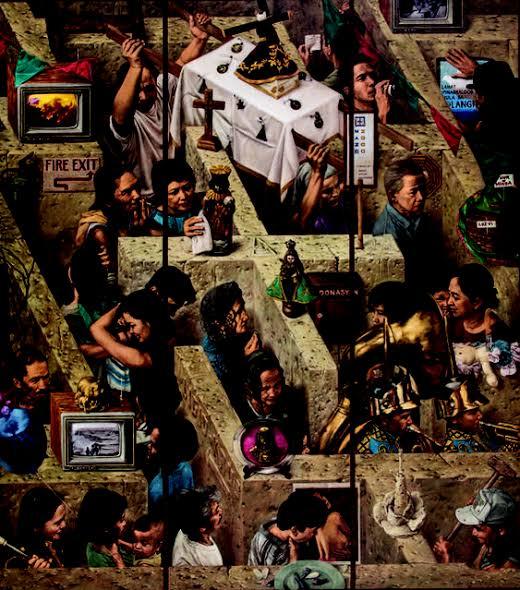
Daang Ligid Cruz (1996)
By: Alfredo Esquillo
Alfredo Esquillo is a Filipino artist and an acclaimed and multi-award winning contemporary painter. He graduated in fine art with a major in painting from the University of Santo Tomas in 1993. Alfredo Esquillo's art keenly reveals the latent influences which have irrevocably shaped his worldview and fostered an intimate aesthetic of social realism tempered by deeply personal concerns. One of his paintings is "Daang Ligid Cruz". This painting received a Philip Morris prize-winning and the materials used are oil and sawdust on canvas and it is 72 x 64 1/5 inches.
It illustrates folk religion, survival, and salvation here in the Philippines and he also wants to remind everyone about the tradition or culture that are applied and practiced by most of us. It also showcases the lifestyle or way of living of most of us in our country where there are some wealthy and some are not.
I think the meaning of the art to the artist is to be able to show the folk religion, survival, and salvation which is very important for us to know and that is also my personal interpretation. As you can see in the picture, it really shows the life of every citizen here in our country and it is like a parade. Aside from this, this art makes me feel better amidst pandemic situations because it helps me to understand the situation of my fellow countrymen where it is very difficult for them to cope up with their situation during this crisis. There are lots of changes happened to us and it affects not just our mental health, it also affects the way of living, like it's so very hard to find a job just to earn money and survive.
This art can help in shaping the modern world by reminding us to become faithful again especially when we are still in the midst of a pandemic. It will also help us to produce more arts or paintings like this with a concept or topic about folk religion, survival, and salvation because it will give a good knowledge and good understanding not just to our fellow countrymen but also for the others who live in different parts of the world. Lastly, for me it also can help in shaping the modern world by giving us some hope and inspiration about producing and creating an art like this where we can show the world how creative and how intelligent we are and that is also a good idea about recognizing our culture.
References:
https://www.philstar.com/lifestyle/arts-and-culture/2018/12/24/1879381/masked-prophets-march-on#:~:text=%E2%80%9CDaang%20Ligid%20Krus%E2%80%9D%20(1996,manifested%20through%20things%20that%20are.
4 notes
·
View notes
Text
Reflection
Bugto, Gianne Karlo Red

Spoliarium
When we say “arts” I’m sure that the first thing that’ll come to your mind is “color”, only because it has something or it leads to “painting” and “drawing”. Based on my experience and observation, if someone said that he/she loves art, the other person will automatically say “ow so you’re good at drawing?”, “How about painting?”.
That’s where most people don’t understand that, arts don’t revolve around painting and drawing things. The arts, also called fine arts, are modes of expression that use skill or imagination in the creation of aesthetic objects, environments, or experiences that can be shared with others. There are different kinds of arts; literature (including poetry, drama, story, and so on), the visual arts (painting, drawing, sculpture, etc.), the graphic arts (painting, drawing, design, and other forms expressed on flat surfaces), the plastic arts (sculpture, modeling), the decorative arts (enamelwork, furniture design, mosaic, etc.), the performing arts (theatre, dance, music), music (as composition), and architecture (often including interior design).
Our country has great artists, including painters and musicians. Filipinos are known all over the world as talented people of the Philippines, and they represented their talents with all their bests. Paintings are such beautiful creations, must say that I find peace and amazement when I looked at paintings, whether from the internet or museum’s. If we’re going to talk about painting, the only one that pops out to my head is the “Spoliaruim”, not the song of the band Eraserheads, but the artwork of the famous painter Juan Luna. Although it inspired the title of rock band Eraserheads’ 1997 hit song “Spoliarium,” which has been connected by many to the Pepsi Paloma rape controversy. The National Museum’s 360-virtual tour, which includes the “Spoliarium,” was launched in October and is still ongoing. —Arianne Suarez, Inquirer Research.
Luna was born in the town of Badoc, Ilocos Norte in the northern Philippines, Luna was the third among the seven children of Joaquín Luna de San Pedro y Posadas and Laureana Novicio y Ancheta. In 1861, the Luna family moved to Manila and he went to Ateneo Municipal de Manila where he obtained his Bachelor of Arts degree. He excelled in painting and drawing and was influenced by his brother, Manuel N. Luna, who, according to Filipino patriot José Rizal, was a better painter than Juan himself.
The Spoliarium (often misspelled Spolarium) is a painted by Juan Luna. Luna, working on canvas, spent eight months completing the painting. The painting was submitted by Luna to the Exposición Nacional de Bellas Artes in 1884 in Madrid, where it garnered the first gold medal (out of three). The reason why I adored Juan Luna’s “Spoliarium” is because it brought historical triumph not just to Luna but also to the Philippines.
“Spoliarium” was the name given to the Roman Colosseum basement where fallen gladiators were thrown in after combat, which is depicted in the life-sized piece. It is currently on display in the National Museum of Fine Arts, the 4.22 x 7.675-meter oil on canvas is considered the largest painting in the country. In addition, it illustrates two dead gladiators being dragged by Romans at the center. On the left, scavengers eye the dead men’s possessions while a Roman beside them raises a fist in protest. A woman mourns a loved one on the right side while an old man searches for a body amid the smoky haze. The depiction of Roman cruelty in the painting has been interpreted as an allegory for the state of the Philippines under Spanish rule.
Just like the paintings, I always fell in love with music. I’m just amazed at how it works, tThe sounds that are so good to hear with the help of musical instruments are very pleasing. With the numerous kinds of music, I love to say that I appreciate it all honestly. I strongly believe that all of us people can’t live the way we are right now without hearing and feeling the sensation and comfort of the art of music. For example, when we are sad and alone, listening to some of our favorite songs makes us feel better. Even if we’re happy and loud, adding some flavor of music can make the situation be the best it can be. There are many definitions of music, 1 : an arrangement of sounds having melody, rhythm, and usually harmony classical music. 2 : the art of producing pleasing or expressive combinations of tones especially with melody, rhythm, and usually harmony I want to study music in college. 3 : a musical composition set down on paper Bring your music.
A song is a form of music. Furthermore, songs are performed by living voices. There are a few techniques that make a song. A few instruments, devices and voices join together to form a song. It includes composition, lyrics, direction and amplification. I have my favorite song, and in addition, I love a song when the lyrics are just so meaningful and relate to me. Related to paintings we Filipinos made a name by being one of the best song performers in the world. From composing and singing we are relentless.
In our country we have our Original Pilipino Music (OPM), it refers to any musical composition with or without lyrics, originally created by a, Filipino, whether the lyrics be in Pilipino, English or other foreign languages, or any other Philippine dialect. This is where I reveal my idol, the maestro Ryan Cayabyab.
Raymundo Cipriano Pujante Cayabyab, known professionally as Ryan Cayabyab, is a Filipino musician, composer and conductor. He was the Executive and Artistic Director for several years for “The defunct San Miguel Foundation for the Performing Arts” and won a lot of awards on his career. He was born on May 4,1954 at Sta. Cruz Manila, Philippines.
What I truly admire and has been the song that keeps on playing especially on Christmas Eve even though It is old and outdated was “kumukutikutitap”. This song doesn’t just add a playful skip to our walk, it makes us meander and enter the magical and most wonderful time of the year – Christmas time! The lyrics of the song are almost like yummy and delightful tongue twisters, matched with a bouncy and animated melody.
The song ‘Kumukutikutitap’ was originally for choir, so since the song wasn’t used, I gave it to the Singers’ Foundation to learn for their Christmas caroling fund-raising activity. The Singers’ Foundation choir included it in their repertoire starting Christmas of 1984.” Members of that group included many big-name OPM singers during that time – Celeste Legaspi, Basil Valdez, Leah Navarro, The Apo Hiking Society, Rico Puno, Marco Sison, Nonoy Zuniga, Eugene Villaluz, Louie Reyes, Pat Castillo, Jacqui Magno, Tillie Moreno. Even the duo of Subas Herrero and Noel Trinidad joined the group, plus the backup singers Babsie Molina and most of her colleagues, and these people are great singers and has been my idol when it comes to OPM. After “Kumukutikutitap” was performed, all the other choirs who heard the song asked for a copy of the choral score. As the years passed, the song became a staple of choirs every Yuletide season.
This song, made me feel that life isn’t that hard, although we are suffering individually for the problems that always been there. I want the people to go back, take a look or should I say listen to our music as Filipinos, appreciate and thank our artists not just on music, but all the artist in our country. Because what we have and what they did is a masterpiece that needs to remembered always.
5 notes
·
View notes
Text
Reflection
Abellon, Joanna Chris

Crisis in Humanity (2017)
“I think it’s become like that in a way because it’s become so popular. But at the same time, if there’s a crisis in humanity, I go back to that, to what affects me politically.”
- Ben Cabrera (2017)
Benedicto Reyes Cabrera, also known as "BenCab," was born on April 10, 1942, in Malabon, Philippines, and studied at the Philippine University. He is highly regarded as a master of contemporary Philippine art, as he is most commonly known. He was awarded the Gawad CCP Para sa Sining in 1992. (Cultural Center of the Philippines Award for the Arts). President Gloria Macapagal-Arroyo awarded him the Order of National Artist for Visual Arts in Malacanan Palace in 2006. At the age of seven, he begins painting on the sidewalk and on walls, motivated by his older brother named Salvador, an established artist. Salvador takes him everywhere and brought him into the world of art.
Crisis in Humanity (2017)
As a normal person who likes gore-themed artwork, it got my attention. Seeing this artwork of the legend Mr. BenCab, I was so amazed and had an eagerness to know what is the story behind this piece. It is an example of a societal problem that exists in many countries. It has something to do with humanity's difficulties, where killings, harassment, and other crimes occur everywhere. Knowing the Philippines, the last administration of President Rodrigo Duterte was exposed to Extra-Judicial killings where Our government's inhumane deed resulted in the deaths of numerous persons who were "suspected" of using illegal narcotics. We all know that consuming illegal substances is bad, but killing someone without further investigation and due process is much worse. Some said that the drug war was anti-poor because a lot of people who died from the killings are the majority from the lower class also known as the poor population. Ben Cabrera was known as a critic of late dictator President Ferdinand Marcos who declared martial law in the mid-’80s. When the current president Duterte allowed the burial of Marcos in the Libingan ng Mga Bayani and freely express his admiration for the late dictator Marcos, the massive killings of the drug war were all over the country, Ben Cabrera was one of the people who stood up and criticized him by his artwork, it speaks how the Philippines experienced the ‘Crisis in Humanity’. There were no particular materials that were shared in the interviews but it is clearly a big canvas with charcoal pencils.
At the first glance, the first thing that comes to my mind is suffering. If you will analyze the faces of every individual in that artwork, the emotions you will see are afraid, despair, sadness, and agony. It clearly implies to me that the people in the artwork had done too much in their life that’s why the facial expressions are kinda bit goosebumps if we will look closely. The shades and the strokes of the charcoal pen are strong.
As a student who’s exposed to social media and in just one click the news is already on my screen, I am aware of what society had been through. I had a friend who’s his father was a victim of EJK and for me, that was really alarming knowing the killers are unknown or called vigelante. My principles are will always side with what is non-violent, I believe that violence is the number one cause of injustices in the world and that is what Ben Cabrera wants to imply, the drug war not only affects the people who died on the scene but the experience left in the consciousness of the people who encounter this bloody drug war. This art made an impact on me especially since we are in a pandemic, we have time to search and watch documentaries and explore art about injustices. It made my principles be sharpened and see the blind spots where I am privileged.
This art will contribute more to seeing the dark side of injustices in the modern world and maybe this served as a platform to discuss these experiences brought about by the abuse of power and corrupt practices.
REFERENCES:
http://www.artnet.com/artists/benedicto-cabrera/4
https://www.askart.com/artist/Ben_Benedicto_Reyes_Cabrera/11020444/Ben_Benedicto_Reyes_Cabrera.aspx
https://www.tatlerasia.com/culture/arts/works-of-ben-cab
https://design-anthology.com/story/new-identity
2 notes
·
View notes
Text
Week 2
Reflection (Music)
The next exhibit are related to music. Our curators will lead you to experience the roller coaster ride of emotions. Buckle up your seat belts and prepare yourself from diving the depthness of every music pieces.

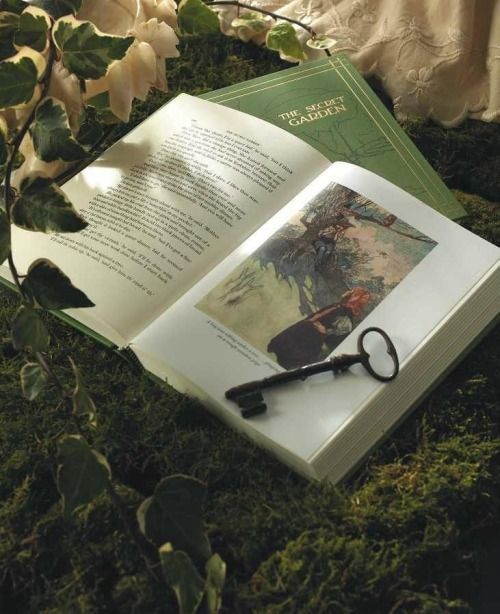
2 notes
·
View notes
Text
Reflection
Villagracia, Eunice Astrid P.
1. Choose one contemporary song from the Philippines
Tatsulok by Buklod; Popularized by Bamboo
2. Tell the background of the artist and what the art is all about.
Francisco Gaudencio Lope Belardo Maalac was born March 21, 1976 is a Filipino-American musician and singer-songwriter better known as Bamboo Maalac or simply Bamboo. He began his career as the original frontman and vocalist of Rivermaya, and later fronted his own band, Bamboo. After the Bamboo band disbanded in 2011, Maalac pursued a solo career, releasing his first solo album, No Water, No Moon. However, "Tatsulok" was first performed in 1991 by Buklod, a trio folk-rock band that publishes and performs songs about the environment, politics, and human rights. The piece was written in 1989 by Rom Dongeto during the Philippine govt's so-called "Total War Policy" with the New People's Army also known as NPA, the armed wing of the revolutionary organization, Communist Party of the Philippines, under late President Corazon Aquino.
Due to its association with Communism, the NPA is referred to in the song as the color "Red" or “Pula” in Filipino, whereas the Philippine Government is referred to as the color "Yellow" or "dilaw", which is the color that Aquino is known for. The lyric describes that the military struggle between both the NPA and the Philippine government during the Aquino administration is merely a symptom of a larger issue. To be clear, the Philippines had been under Martial Law for fourteen years under late President Ferdinand Marcos. And the NPA was one of the groups that managed to help overthrow Marcos, vacating the seat that Aquino eventually took when she was sworn into office on 5 February 1986. As a result, the NPA's war with the prior Marcos dictatorship of the Philippine Government chose to continue under Aquino's administration, resulting in the "never-ending war" .
3. Tell the story behind the song what inspired the artist of making it.
The music describes to a young man that there is a fight going on and that the battle is only a symptom of a larger problem. It instructs the young man to take initiative and turn an upside-down pyramid to end a never-ending war between both the rich and the poor. In other words, it is the narrative of the French masses' fight and triumph inspired the activist to mark down his own ideas on what it will take to transform Philippine society so that the sizeable portion at the bottom of the pyramid prospers, not just the few at the top. Moreover, tatsulok (Triangle) is a figurative title for the song. It defines our society's social class, where only just few people are at the top. It is the socio-political pyramid, organized by the debauched system's overhaul forces who are submissive to foreign interests and the wealthy class.
4. What do you think is the message the artist would like to convey?
You can tell from the title that it is about the Marxist viewpoint. The song is about the current state of the Philippines, as seen through the eyes of the people's social standing or class. Tatsulok translates to triangle in English, which is the model Karl Marx used to explain social classes in a capitalist world. Simply listening to the entire song reveals the song's goal, which is to inform the Philippine government of the public's reaction to the poor treatment of the ruling classes. The part of the song that caught my attention was when Bamboo said, "Hindi pula't dilaw tunay na magkalaban Ang kulay at tatak ay di syang dahilan Hangga't marami ang lugmok sa kahirapan At ang hustisya ay para lang sa mayaman." It basically means that the wealthy elite have been ruling the Philippines for a long time. Bamboo stated at the end of the song, "Habang may tatsulok at sila ang nasa tuktok, Hindi matatapos itong gulo." This simply means that as long as the oligarchs rule, the issues will continue until the political establishment changes. In short, it is about the Marxist viewpoint that says equality will only occur if capitalism is abolished.
By all means, the song "Tatsulok" highlights the origins of the military war in the country, which are exacerbated by poverty. This focuses on the social pyramid, a power structure in which people with higher social status are at the top and people with lower social status are at the bottom. The song uncovers that only some few wealthy elite keep living in luxurious lifestyle, while the majority of the people remain impoverished. Thus, the moral superiority of highly regarded upper-class people and the marginalization of lower-class people only detect the presence of cultural superiority, that political influence are controlled by self-serving political favors, and those in power have significantly lowered many poor people to non-persons. Cultural dominance elevates the social standing of the wealthy, informed, balikbayans, and those in authority, shaping and dictating way of thinking and view of the world, whereas the rest are treated unfairly against and impoverished.
Tatsulok is, in fact, hateful. It is a social inequality structure that continues to perpetuate economic welfare dependency, political favors, institutional discrimination, and sociocultural deformation. This song has the potential to alert poor people who are deafeningly deafeningly deafeningly deafeningly deafeningly deafeningly deafeningly de It may also serve as inspiration to others to fight for equality.
5. How does this song help you in times of Pandemic?
Who might have guessed that alcohol, face masks, and face shields would be in high demand? Countless individuals couldn't even leave their homes without their smart phones less than a year ago. Face masks, as well as face shields, quarantine passes, and containers of rubbing alcohol, are now required. Every night, the news is filled with stories about death, economic hardship, and unfair treatment. If we don't pay attention to every detail, we may become desensitized to them. Our nation's economic worrisome political dynamics add to our frustration and anger and divert our attention away from what is most important, which is the fight against by the virus.
The song "Tatsulok" by Buklod from the 1980s, popularized by Bamboo a few years ago, comes to mind. "Hindi pula't dilaw tunay na magkalaban," Noel Cabangon exclaimed. This, I believe, is still relevant today. The disease is the enemy, not the color of our political affiliation or stance. Poverty, hunger, and injustice are our adversaries. Even common enemies cannot bring our leaders together. And it appears that self interests have trumped objectivity. But enough of that for now. I won't go into detail about those problems here. The pandemic also serves as a reminder of what truly makes life worth living: sincere family and friends, generosity and kindness, faith and love. Being genuine pertains not only to companionship, but to all facets of life. Fake news is so prevalent these days that even values like benevolence, compassion, and love can be imitated. But, despite all of this, I believe the most important thing to learn that COVID-19 is attempting to instruct us is the tough message of humility.
The representation of Tatsulok
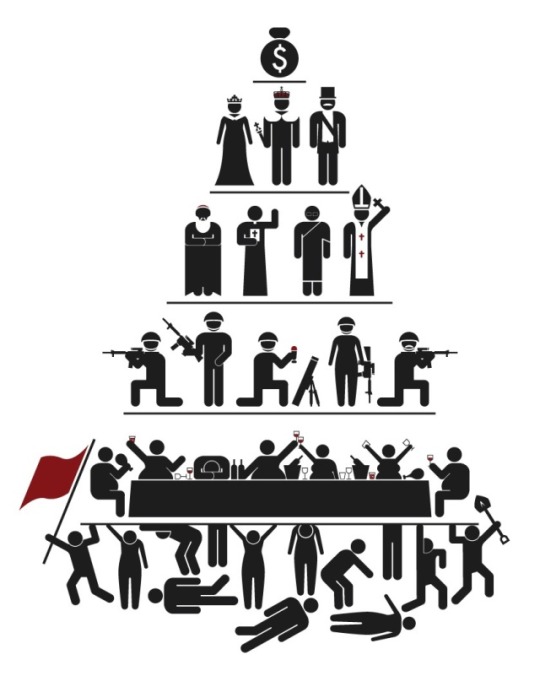
2 notes
·
View notes